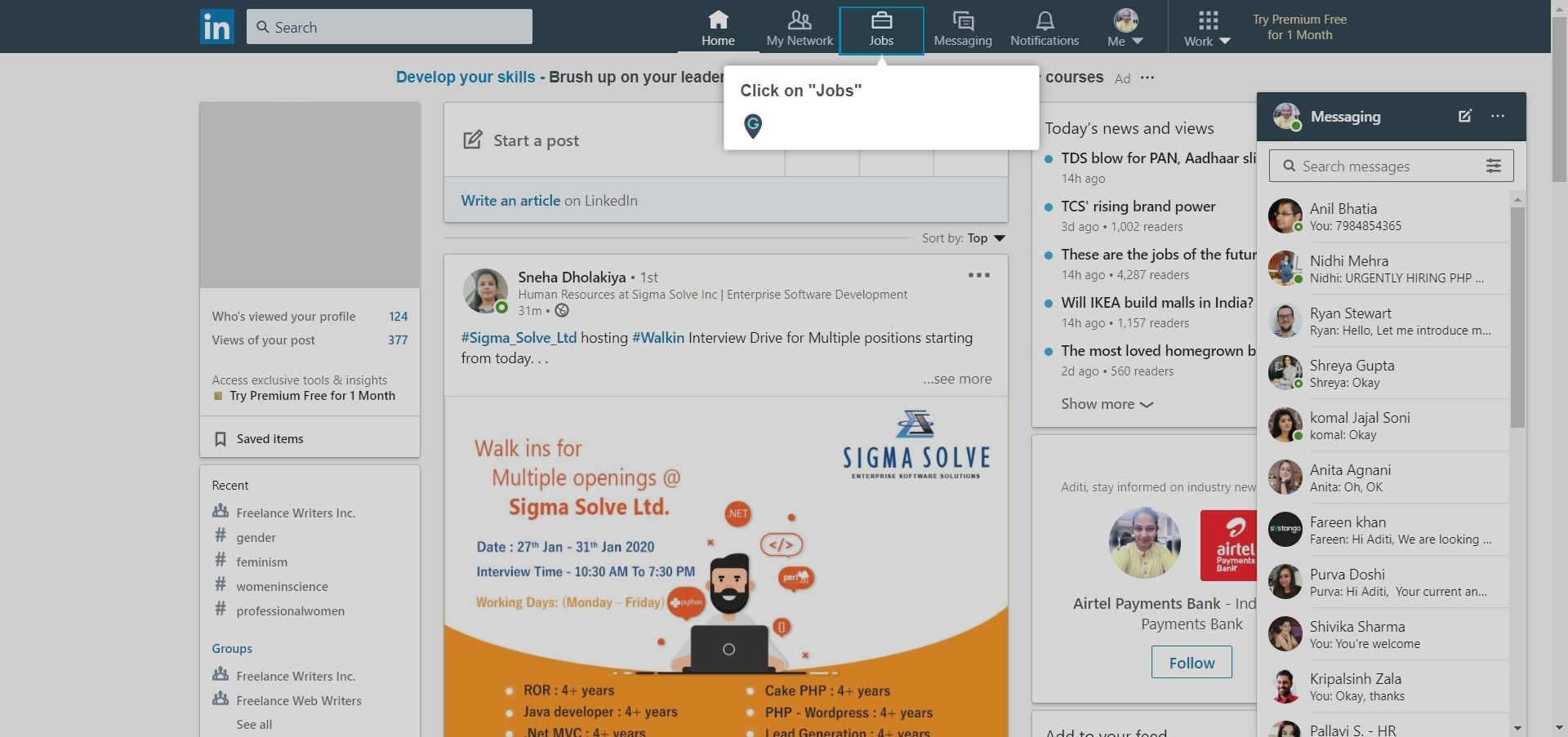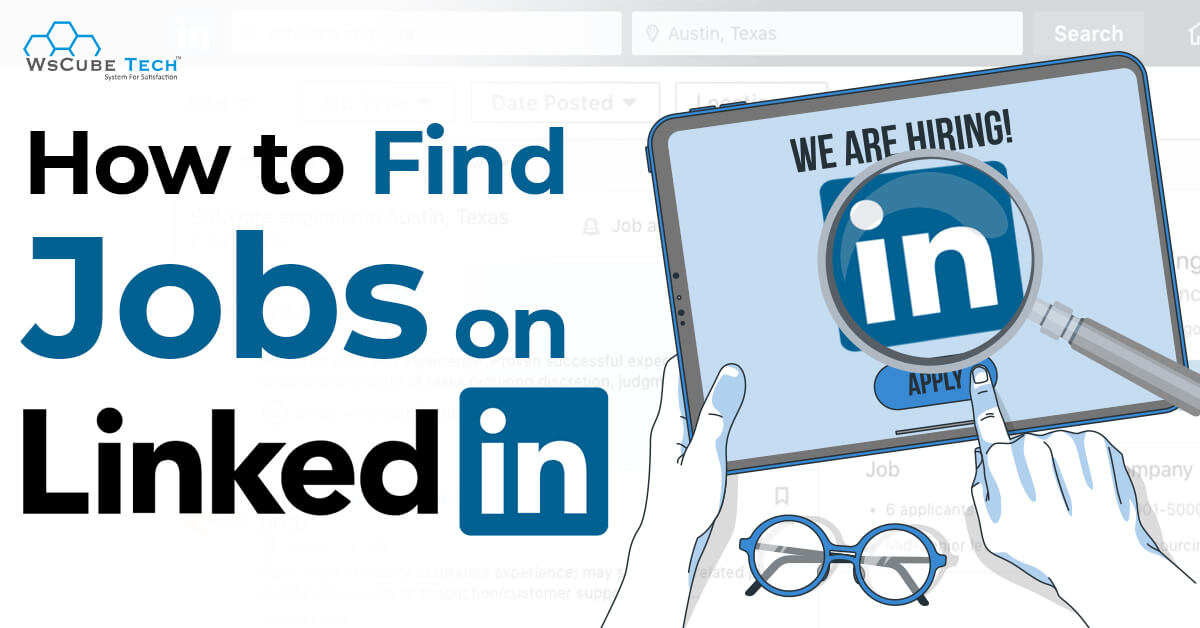Navigating the World of Online Jobs: A Student’s Guide to LinkedIn
Related Articles: Navigating the World of Online Jobs: A Student’s Guide to LinkedIn
Introduction
With enthusiasm, let’s navigate through the intriguing topic related to Navigating the World of Online Jobs: A Student’s Guide to LinkedIn. Let’s weave interesting information and offer fresh perspectives to the readers.
Table of Content
Navigating the World of Online Jobs: A Student’s Guide to LinkedIn

The digital age has revolutionized the job market, and for students seeking work experience and income, the online realm offers a wealth of opportunities. Among these platforms, LinkedIn stands out as a powerful tool for connecting with employers and securing valuable work assignments.
Understanding LinkedIn’s Role in the Student Job Market
LinkedIn is more than just a social networking site; it is a professional platform designed for building connections and exploring career paths. Its unique features cater specifically to students seeking work experience, internships, and part-time employment.
Benefits of Using LinkedIn for Students
- Networking: LinkedIn allows students to connect with professionals in their field of interest, expanding their network and gaining insights into various industries.
- Job Search: The platform provides access to a vast database of job postings, including internships, part-time roles, and entry-level positions, catering to students’ diverse needs.
- Visibility: Building a strong LinkedIn profile showcases a student’s skills, experience, and aspirations to potential employers, increasing their visibility and attracting relevant job opportunities.
- Skill Development: Through LinkedIn Learning, students can access online courses and resources to enhance their skills and make themselves more competitive in the job market.
- Career Guidance: The platform facilitates interaction with professionals through groups, discussions, and articles, providing valuable career guidance and mentorship.
Leveraging LinkedIn for Successful Job Hunting
Creating a Professional Profile:
- Headline: A compelling headline summarizes a student’s skills and career aspirations.
- Summary: This section provides a concise overview of a student’s professional background, skills, and career goals.
- Experience: Highlight relevant experience, including internships, volunteer work, and academic projects, showcasing transferable skills.
- Education: Detail educational background, including academic achievements and relevant coursework.
- Skills: List relevant skills, both technical and soft skills, demonstrating competency and adaptability.
- Recommendations: Solicit recommendations from professors, mentors, or previous employers to validate skills and experience.
Actively Engaging with the Platform:
- Networking: Connect with professionals in relevant fields, join industry-specific groups, and participate in discussions to build relationships and gain insights.
- Job Searching: Use LinkedIn’s search function to find relevant job postings and apply directly through the platform.
- Content Creation: Share insightful articles, participate in discussions, and contribute to group conversations to demonstrate expertise and build a strong online presence.
- Utilizing LinkedIn Learning: Invest in online courses to enhance skills and acquire new knowledge, showcasing commitment to professional development.
Navigating the Job Application Process on LinkedIn
- Tailoring Applications: Customize applications to each specific job posting, demonstrating genuine interest and understanding of the role.
- Following Up: After applying, reach out to the hiring manager or recruiter to express continued interest and inquire about the status of the application.
- Utilizing LinkedIn’s Messaging Feature: Contact potential employers directly through LinkedIn’s messaging feature to initiate conversations and express interest in specific opportunities.
Frequently Asked Questions
Q: How can students use LinkedIn to find internships?
A: Students can utilize LinkedIn’s search function to find internships by filtering by industry, location, and keywords. They can also join industry-specific groups and connect with professionals who may have internship opportunities.
Q: What are some tips for students to optimize their LinkedIn profiles?
A: Students should include a professional headshot, use keywords relevant to their field, and highlight relevant experience and skills. They should also solicit recommendations from professors, mentors, or previous employers.
Q: How can students utilize LinkedIn for networking?
A: Students can connect with professionals in their field, join industry-specific groups, participate in discussions, and attend online events to build relationships and gain insights.
Q: Is LinkedIn a good platform for finding part-time work?
A: Yes, LinkedIn can be a valuable resource for finding part-time work, especially in fields that require professional skills or experience. Students can search for relevant job postings and connect with potential employers directly.
Tips for Success
- Be Professional: Maintain a professional demeanor in all interactions on LinkedIn.
- Be Active: Regularly update your profile, engage in conversations, and actively seek out opportunities.
- Be Specific: Tailor your applications and messages to each specific job or opportunity.
- Be Persistent: Don’t give up easily. Continue to network, apply for jobs, and build your online presence.
Conclusion
LinkedIn offers students an invaluable platform for exploring career opportunities, building professional connections, and enhancing their job search efforts. By actively engaging with the platform, developing a strong profile, and utilizing its features effectively, students can gain a significant advantage in the competitive job market. The platform serves as a bridge between academia and the professional world, empowering students to navigate their career paths with confidence and success.
![]()






Closure
Thus, we hope this article has provided valuable insights into Navigating the World of Online Jobs: A Student’s Guide to LinkedIn. We hope you find this article informative and beneficial. See you in our next article!
